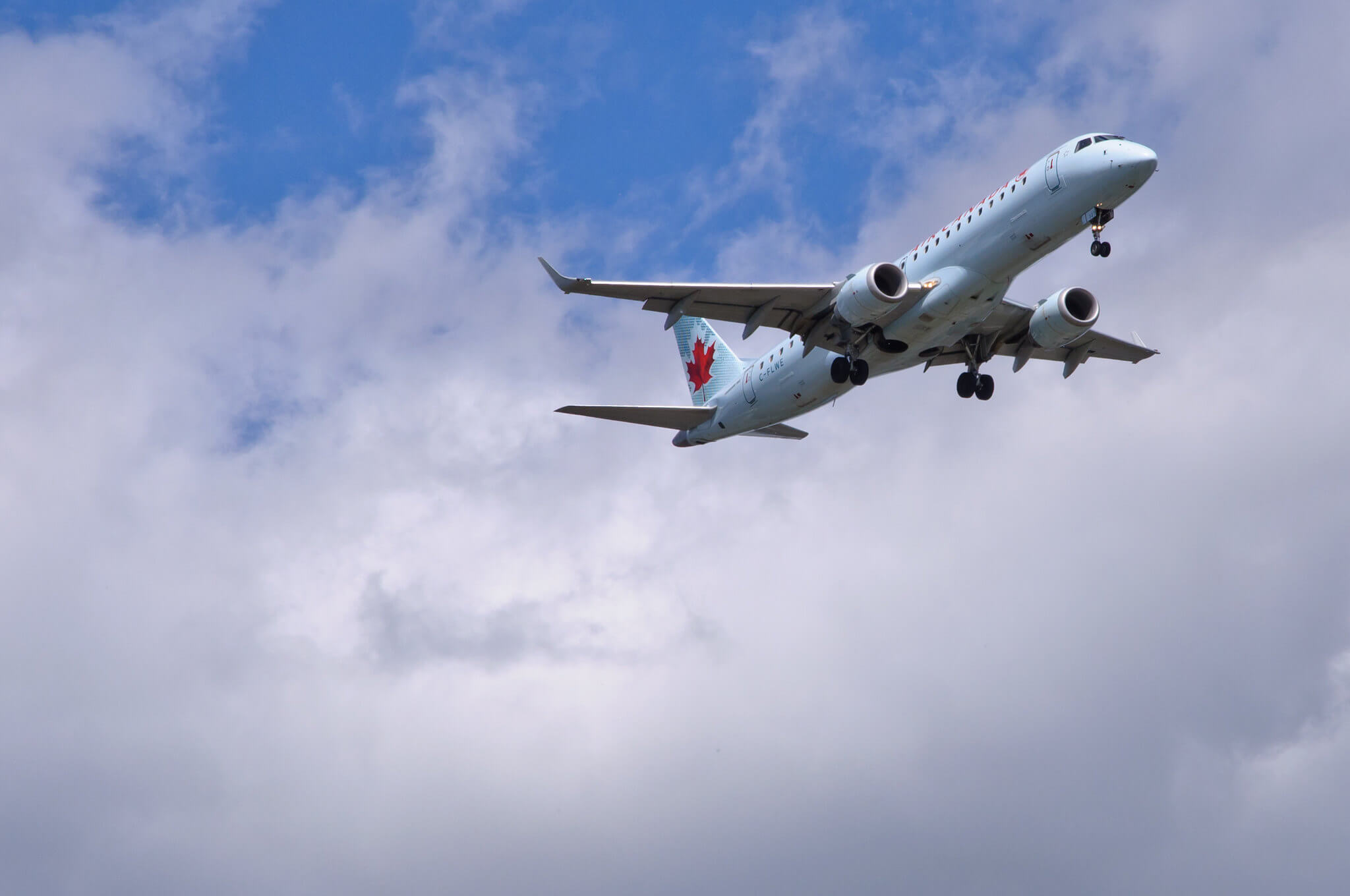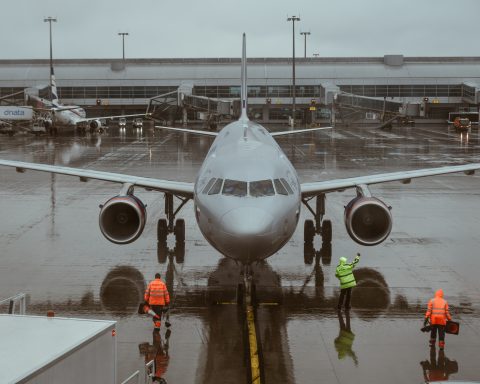With Canada lagging far behind Europe and the United Kingdom in tackling carbon pollution from aviation, the country’s upcoming 10-year climate plan for the sector must be developed with public input and enforce a 30% emissions reduction target by 2030, climate advocates say.
“Canada has given its aviation industry a free ride on climate change for too long,” write Lyn Adamson, co-chair of ClimateFast and Joe Vipond, president of the Canadian Association of Physicians for the Environment (CAPE) in a recent op-ed for the Ottawa Citizen.
They add that Canada’s 2012 action plan for aviation “was developed solely with the airline sector, did not require any reductions in climate emissions until 2050, has no credible plan to do so, and has allowed emissions from that sector to increase by 35%.”
Due in September, the updated plan is “once again being developed without public consultation,” they write, raising concerns it will fail to reduce emissions from the fastest-growing source of climate pollution in Canada.
The David Suzuki Foundation has a pre-written letter urging federal transport and environment ministers Omar Alghabra and Steven Guilbeault to mandate a reduction in aviation emissions.
Meanwhile, the global aviation industry is growing adept at paying lip service to the need to cut emissions, while focusing its real efforts on the ongoing turbulence of post-pandemic supply and demand problems, writes the New York Times. The sector has made innumerable concerted, ongoing, and self-interested efforts to undermine or delay efforts to reduce emissions.
In Canada, “emissions from Canadian airlines increased by 75% between 2005 and 2019 to over 22 million tonnes a year; equivalent to the emissions from five million passenger vehicles,” Adamson and Vipond say.
“More than half of global aviation emissions are produced by 1% of super-emitters—people who fly monthly or take more than three long-haul flights a year,” they add, while “about 90% of the world’s population—including the vast majority of people in developing countries most harmed by climate change—hardly ever fly.”
Failing to hold the Canadian aviation industry responsible for its emissions has national and international consequences, said Doris Greenspun, CEO of the Registered Nurses’ Association of Ontario, in a ClimateFast news release. “Every sector of our society must be transformed if we are to preserve a livable planet for our children. Air transportation is no exception.”
“That is why more than 30 health, environmental, faith-based, and youth groups are calling upon the federal government to ensure that its new action plan for aviation emissions halts the growth of emissions from the airline industry,” write Adamson and Vipond.
Canada has given its aviation industry a free ride on climate change for too long.
-Lyn Adamson, co-chair of ClimateFast and Joe Vipond, president of the Canadian Association of Physicians for the Environment
While Canada has no 2030 airline targets, Denmark has committed to achieving 100% fossil-fuel-free domestic flights by 2030, while the Netherlands plans to reduce emissions to 2005 levels by the decade’s end, the op ed states. France is banning short-haul flights, while the UK has explored a “frequent flyer” tax.
But Carbon Brief recently reported that the UK may not be the best model to consider for aviation emissions planning. The government’s breezily named “Jet Zero” strategy is meant to address what its own Climate Change Committee (CCC) has repeatedly warned is a critical gap in its national climate strategy.
Though Jet Zero pledges net-zero aviation by 2050, the promise will depend on as-yet uncertain “breakthroughs” in sustainable aviation fuels and zero-emissions aircraft, Carbon Brief explains.
And while electric planes may soon be flying in airspace near you, Canary Media writes, their impact on emissions will be “minuscule”: battery limitations mean these planes will not be able to replace the heavy, long-range aircraft that produce the “vast majority” of aviation emissions.
In the absence of real technological breakthroughs, UK aviation emissions will rise by 14 megatonnes of carbon dioxide equivalent (CO2e) from 2018 levels by 2050 under Jet Zero, with passenger numbers increasing 70% by 2050 from 2021 levels.
Even if the promised tech breakthroughs held true, sector emissions would still stand at 19 megatonnes of CO2e in 2050, emissions that would need to be mechanically removed from the atmosphere for the UK to meet its net-zero target.
But “removal technologies are still in their infancy, and there is uncertainty about whether they will scale up sufficiently,” Carbon Brief says.
The UK’s aviation strategy alsp stands firmly opposed to efforts to reduce flight demand or airport expansion. “Our approach for decarbonizing aviation will focus on the rapid development of technologies,” the Jet Zero authors say. “Our analysis shows that the sector can achieve jet zero without the government needing to intervene directly to limit aviation growth.”
That approach runs directly counter to CCC recommendations, notes Carbon Brief: “Under the CCC’s central pathway for reaching net-zero by 2050, outlined in its Sixth Carbon Budget report, aviation demand would be limited to growth of no more than 25% by 2050, when compared to 2018 levels.”
This article is republished from The Energy Mix. Read the original article.







